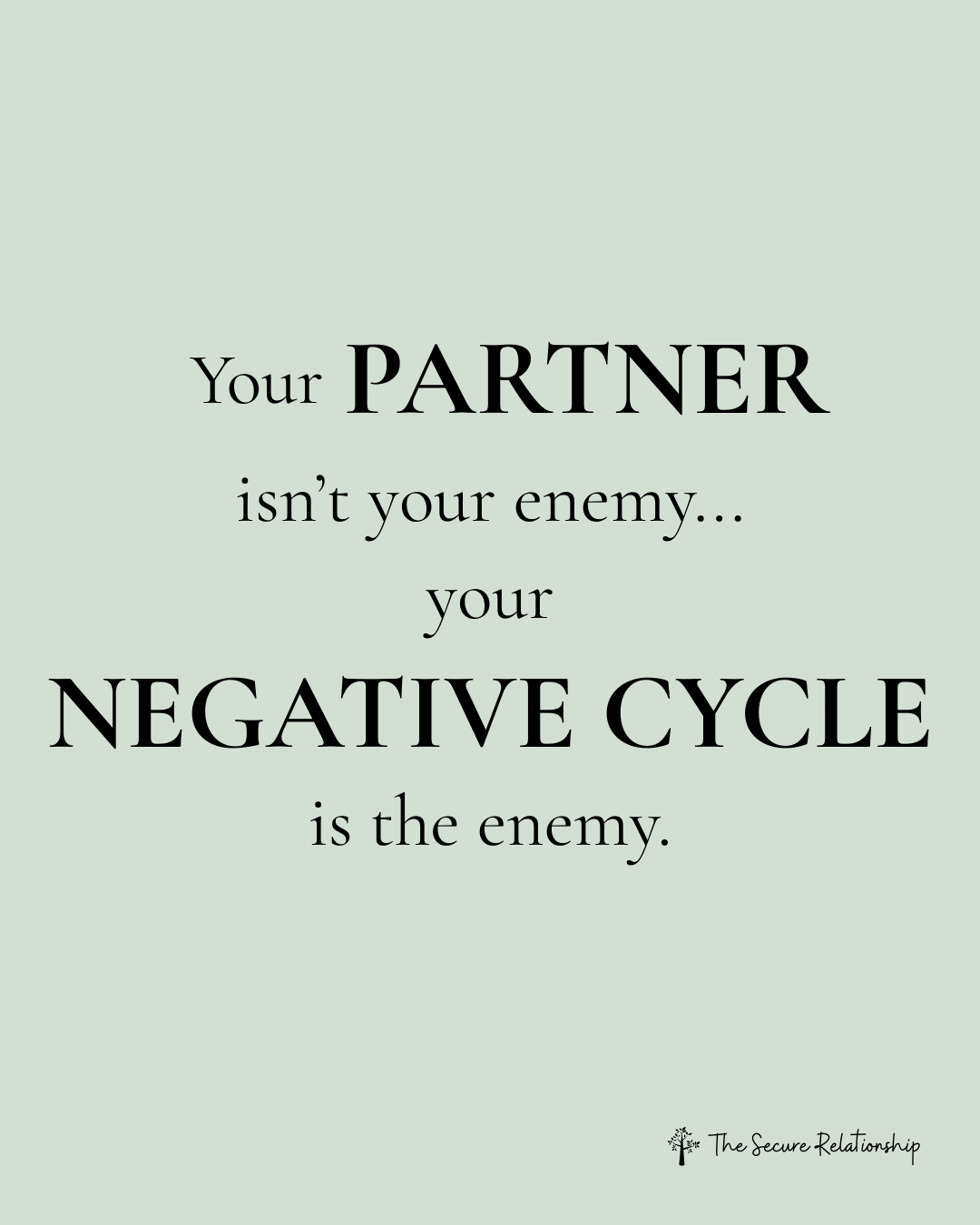I’d like to better understand…
Attachment Based Relationship Tips
Looking to strengthen your relationship? Our blog offers expert relationship tips rooted in attachment theory and Emotionally Focused Therapy. Learn how to identify your attachment style, communicate more effectively, and foster emotional safety with your partner. From overcoming conflict to building deeper trust, our practical advice and tools, created by couples therapist Julie Menanno, are designed to help you move toward a secure and fulfilling connection. Dive in and start transforming your relationships today!
Your Partner Isn’t the Enemy—Your Negative Cycle Is
In emotionally stuck relationships, your partner isn’t the enemy. The negative cycle is. Learn how to identify the cycle, understand each other’s roles, and begin the process of healing.
How to Be Emotionally Available – Part Four: Emotional Presence
Emotional presence is the ability to join someone in their feelings without losing yourself in the process. When practiced consistently, it deepens connection and builds trust.
How to Be Emotionally Available – Part Three: Emotional Attunement
When your partner is upset, they don’t always need a solution. Sometimes, what they need most is to know you’re with them in it. That’s emotional attunement—and it can change everything.
How to Be Emotionally Available – Part Two: Authenticity
If you’re not showing up, there’s none of you to connect with. Authenticity is the foundation of emotional availability—and it's something you can learn.
How to Be Emotionally Available – Part One: Emotional Validation
Emotional validation isn’t about agreeing with your partner—it’s about showing them that their feelings matter. And when it comes to emotional availability, few things are more powerful.
Are You Emotionally Available?
Emotional availability is the foundation of secure connection. If you're wondering whether you're truly showing up for your partner, here are five ways to deepen emotional presence and intimacy.











In this session, Julie explores the often unspoken question: Am I carrying too much of the emotional weight in my relationship? She breaks down what emotional work really means—offering support, creating space for connection, showing vulnerability—and helps you identify when it starts to feel one-sided or unsustainable.
Julie guides you through why these patterns develop, what they might be protecting, and how to begin shifting out of them. Whether you tend to over-function or struggle to engage emotionally, this conversation offers a clear, grounded path toward more balance, clarity, and connection.